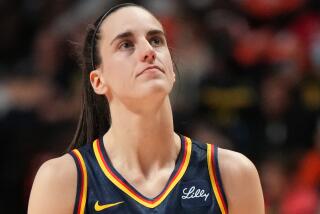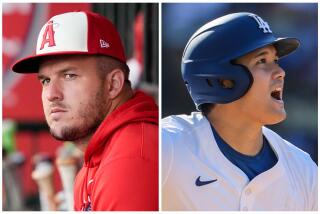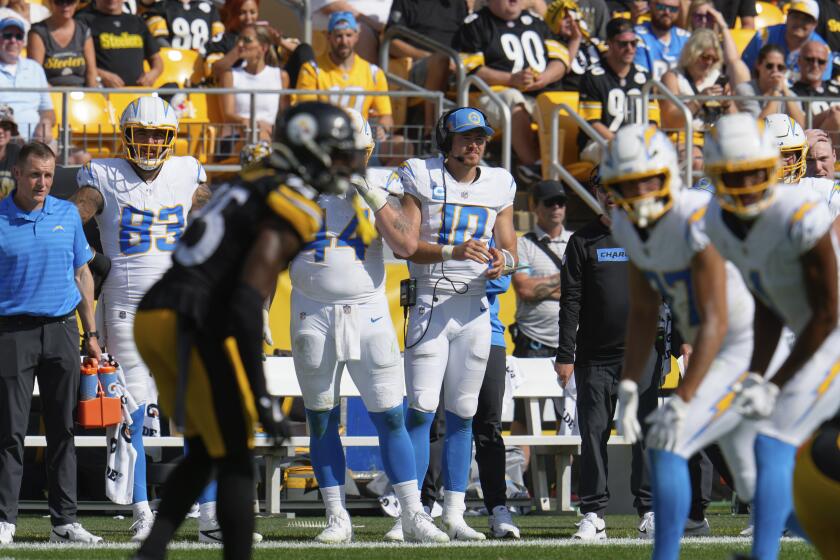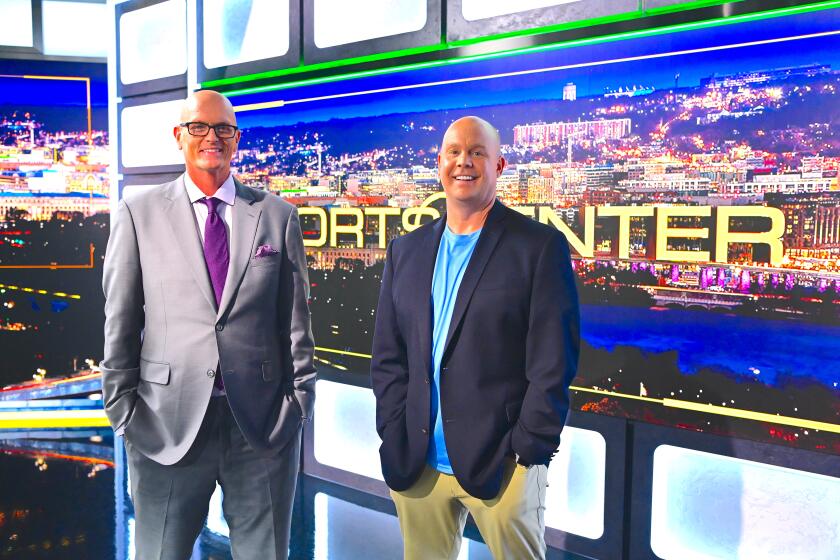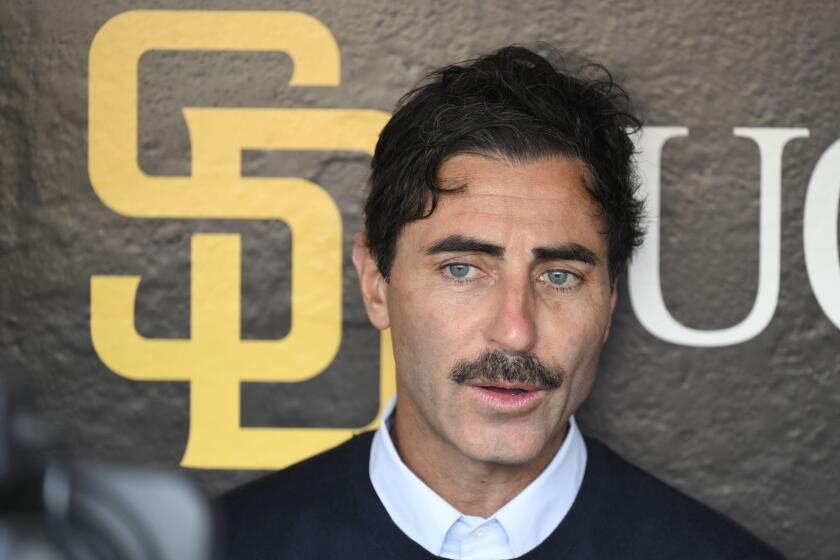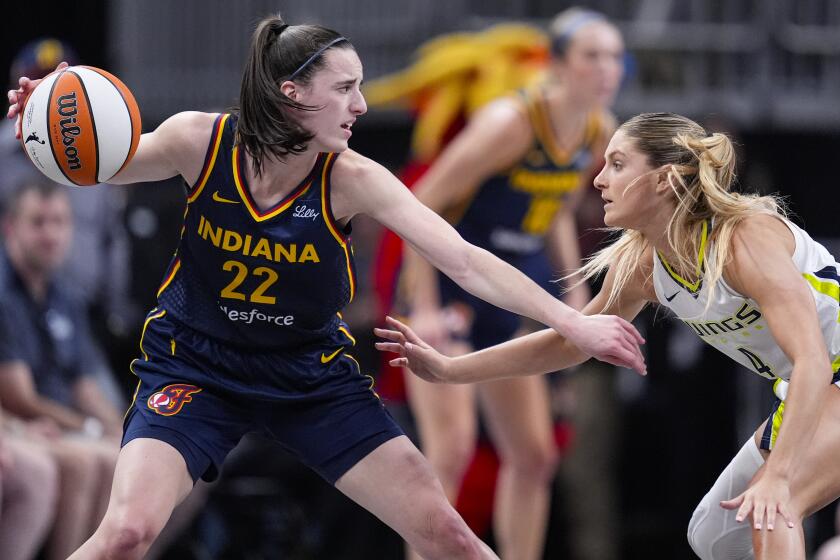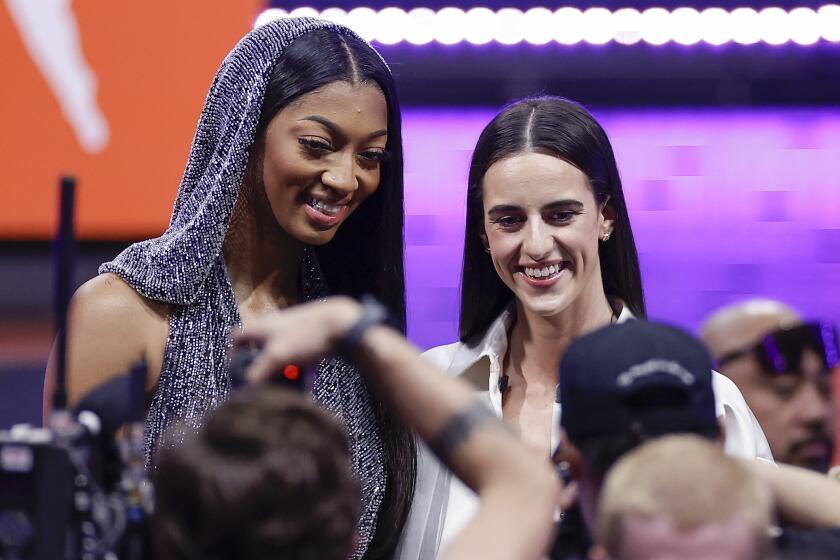Manhattan Beach Open digs back to its roots
For years, father and son began about 5:30 in the morning, the two of them trekking through the still-cool sand carrying ropes, nets and wooden planks to help set up the crown jewel of beach volleyball tournaments — the Manhattan Beach Open.
Those were the mornings J. Parker Saikley enjoyed the most, the ones in the late ‘70s when his father, Charlie, who became known as the “godfather of beach volleyball,” ran the Open. It was old-school then; a big beach party, essentially.
But when the Assn. of Volleyball Professionals was created in 1983 and eventually took control of the Open, it began to change. Over time, more sponsors became involved. Grandstand seating was installed. Fences too.
Now, though, with the AVP having canceled the season after running out of money, the Open, which begins Friday in Manhattan Beach, will return to its old-school roots for its 50th anniversary.
And the man directing it is the same one who waxes nostalgia about the good old days.
“It’s going to look like it does in the old photographs,” J. Parker said. “I can almost guarantee that.”
Among a segment of die-hard fans, this is a good thing. The Open, as well as other AVP events, had become too commercialized, they say, catering more to sponsors and television than the sport.
“It just became a circus and wasn’t as fan friendly. It took away from the whole event,” said Ed DeGrasse, 46, of Manhattan Beach.
DeGrasse, who played college volleyball at Cal State Northridge, said he stopped attending AVP events shortly after he saw a fence erected at the Huntington Beach Open a few years ago. But now that the Manhattan Beach Open will be a throwback, DeGrasse and his friends will probably attend.
But for players, the change isn’t such a good thing.
“Without the commercial part of it, the tour doesn’t get money,” Todd Rogers, who won a gold medal with Phil Dalhausser in the Beijing Olympics, wrote in an e-mail from Norway. “If the tour doesn’t get money, then the players don’t get paid to play. If the players don’t get paid to play, then it is just a nice amateur event with a lot of history to it.”
Likewise, Jen Kessy, who with April Ross has won four AVP events this year, believes the Open needs to be a professional event.
“Times change and evolve and the Manhattan tournament has changed with them,” she wrote in an e-mail from Finland. “It needs to be a professional event to be as good as it can be [and] without the AVP or the world’s best players, it will be difficult to accomplish that.”
This year, though, there is no other choice. Without the AVP’s financial backing, Open officials — largely the California Beach Volleyball Assn. and the city of Manhattan Beach — are scrambling to find sponsors to fund the event and prize money to pay the winners.
The main draw will feature 64 teams, as it did last year, but there are several changes, some subtle, some not:
—The tournament will use a classic white leather ball, a longer court and a sideout-scoring system in which only teams that serve can earn points, versus the rally-scoring system typically used in AVP, NCAA and in international competition that awards points every time the ball hits the ground.
—There also will be no stadium seating, sponsor village, or fence.
“It’ll really be as simple as come on down, bring a beach chair and watch some volleyball,” said Mark Leyman, recreation services manager with the Manhattan Beach parks and recreation department.
Of course, these changes aren’t popular among everyone. Olympic gold medalist Kerri Walsh has threatened to boycott the Open this year because it won’t be played under the accepted international rules, such as the change in the scoring system.
But even with the expected absence of Walsh and other stars, CBVA President Chris Brown expects the Open’s simplicity will make the event enjoyable for the fans.
“It’s a bummer for the sport that the AVP wasn’t able to finish out the year, but it may not be a bad thing,” Brown said. “It might be what the sport needed.”
And as for J. Parker, who has directed several tournaments but never the Open, it’s a chance to follow in his father’s footsteps, as he did decades ago on those early mornings.
“All those memories come back because he’s not here and it’s my turn,” said J. Parker, speaking of his dad, Charlie, who died of cancer five years ago. “It’s a challenge, but I’m going to have a good time carrying on his memory. I just want to make him proud.”
More to Read
Go beyond the scoreboard
Get the latest on L.A.'s teams in the daily Sports Report newsletter.
You may occasionally receive promotional content from the Los Angeles Times.
